Our recommended list process has monitored crop improvement and guided variety selection in this country for generations.
Each list provides a solid multisize, multiyear evaluation of individual varieties ensuring that they are robust before they are recommended to farmers.
This independent crop evaluation programme is provided by the Department of Agriculture, Food and the Marine and is based on comprehensive field trials conducted over a number of years in the main tillage regions.
There are over 200ha dedicated to the crop evaluation programme, including forage crops, across five Department-managed centres throughout the country.
The volume of varieties in the system at any one time is significant, with a total of 169 cereal varieties, 102 grass and clover varieties, 24 winter oilseed, 35 forage maize, 20 potato and 10 spring-bean varieties currently in the system.
The recommended list system has traditionally required that any new variety be at least as good as, or better than, existing varieties.
This ensured continuous improvement for farmers as the trialling system uses control varieties which change over time and new varieties are judged against these.
This system has enabled farmers to identify improved genetic potential in varieties that were proven to be quite robust for our conditions.
New challenges
Grain yield and standing power were always of considerable importance to growers and often not enough consideration was given to other characteristics. But, a few years ago, the evaluation system began to place more emphasis on other variety characteristics that had become increasingly important.
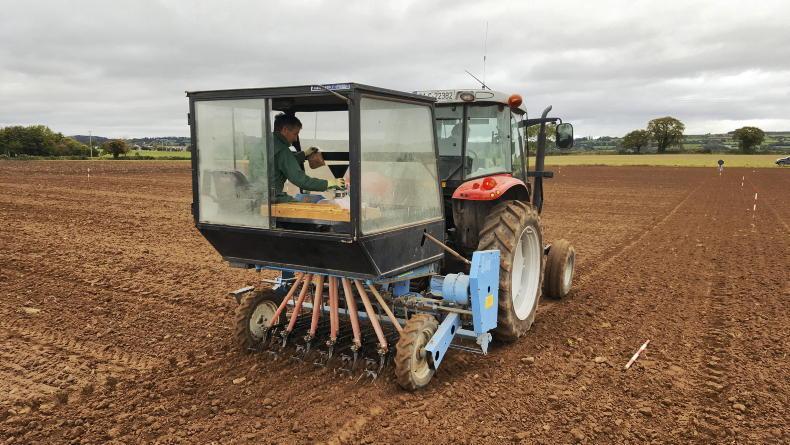
Staff at the Department of Agriculture evaluate varieties across a big range of crops.
An example of this was Costello winter wheat which was recommended with a relative yield of less than 100 (99) to deliver a good package of consistent yield performance, very good yellow rust, lodging and sprouting resistance and excellent specific weight. It was not great against septoria, but it was not too bad either.
As we look towards the future, the tillage sector will face many new pressures from policy initiatives. The sector is already suffering margin reductions on the back of EU “free trade” measures and the convergence of entitlements.
We will have fewer chemical tools and there is increasing emphasis on water quality, while many fields still need fertility improvement. And, now, we have new targets for pesticide reduction and decreased fertiliser usage.
Tillage farmers have relied heavily on the recommended list as a primary tool in integrated pest management to help reduce dependence on the need for pesticides.
The recommended lists give us a choice of crop varieties that have proven to be robust across years and sites to help safeguard growers from unexpected eventualities. It also outlines the risk to individual varieties from specific concerns.
Evolving disease resistance
While these lists have served farmers well for decades, can they do more? Is it time to look differently at how they are prepared and assessed, and can they be upgraded to offer more value or information to growers?
To this end, I recently spoke to senior figures in the crop policy, evaluation and certification division at the Department of Agriculture who conduct the recommended list evaluation.
The first topic we discussed was disease resistance evaluation. While this topic has always been important, it is seldom the number one criterion for variety selection by growers but known disease susceptibility risks were clearly identified in the ratings.
Loss of fungicide actives and the increasing complexity of fungicide resistance have brought genetic resistance to septoria, ramularia, mildew and yellow rust into sharper focus.
In 2021, the Department added additional untreated replications to help improve the reliability of the disease resistance scores.
This issue is of particular interest in relation to septoria in winter wheat.
A good source of single-gene resistance used in some recent varieties was overcome by the fungus.
One of those varieties has since been used as a parent and some of its progeny are being evaluated for their performance and suitability for Irish growers.
Having looked good in the initial years, it transpires that they have succumbed to the exact same septoria isolate which broke their Cougar parent. This presents a significant dilemma for the industry as a whole.
These varieties account for about 20% of certified winter wheat seed availability for autumn 2021. They are generally beneficial, but they will likely end up with a very low septoria rating based on their performance in the south this year. So, can or will they be recommended?
This is a serious dilemma for the officials producing the recommended lists. Some of these varieties might still be relatively suitable for lower septoria pressure areas up the east coast, but these too will get a very wet year at some point. And if such a variety is recommended, will growers, advisers and merchants heed the relative risks?
One possible response is to move to regional recommended lists – one for high septoria pressure areas and another for lower pressure areas. But high-pressure years can occur everywhere and lower septoria pressure areas could well see higher yellow rust pressure. And where might such risk pressure regions be?
Munster and parts of south Leinster are seen as having very high septoria pressure but there are areas within this region that would generally have lower septoria pressure.
An alternative might be to have risk footnotes for individual varieties regarding disease pressure suitability but there is no guarantee that such advice would be followed.
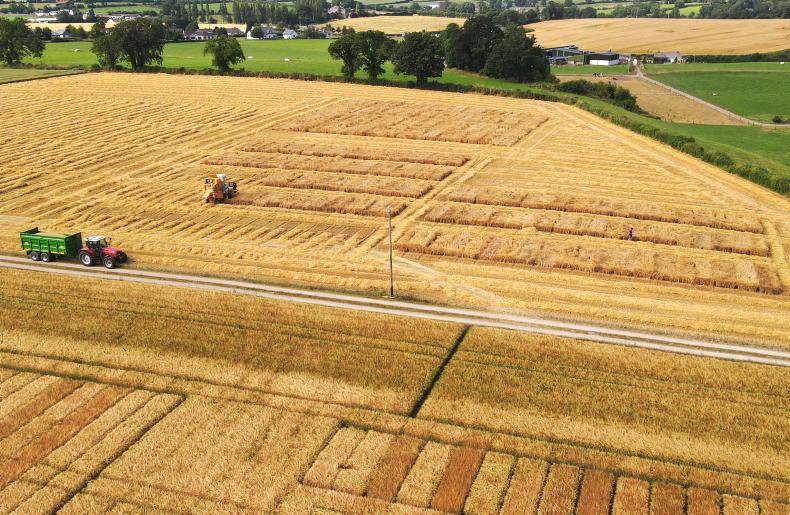
Harvesting some of the winter barley recommended list variety plots at Ballyderown.
As the recommended lists aim to advise on the “safe” varieties to grow, inappropriate choice could bring the recommended list process into disrepute.
Some argue for a descriptive rather than a recommended list to allow growers and their advisers decide on the “risks” they are prepared to take.
The basis of resistance
It is no longer sufficient to have the relative resistance rating of a variety against some diseases – there is an increasing need to understand the genetic basis of that resistance.
While single-gene resistance can be overcome by an evolving fungus, just like using a straight single active fungicide, having other less dominant sources of resistance alongside it (a multisite approach) might add considerably to its long-term usefulness.
But how can growers and the recommended list process know this? Having single-gene resistance only could mean that a variety could crash against a disease.
If the EU allows access to new breeding techniques, we will all need an improved knowledge of the basis of the types of resistance being provided.
Strength
So, can the recommended list system identify the strength and durability of the resistance being offered by a variety and provide the information to growers for a range of diseases?
While it would be beneficial to know the genetic basis of variety resistance, this would require the co-operation of breeders to share this information. Having strong single genes, bolstered by several other genetic mechanisms, should prove much more robust over time.
Different varieties might use a different strong gene with similar or different “small gene” effects to provide a different resistance package.
Could we conceive of a new wheat variety with say a resistance rating of seven against septoria (or a similar number for ramularia if a resistance source was identified) given an “A”, “B” or “C” risk category associated with that disease, just like we have families of fungicide actives?
There are many new issues emerging that are of consequence to the recommended list process.
Many of these are around claims made by breeders about a variety characteristic.
These may well prove to be true, but they cannot always be verified by the recommended list process.
Such issues are likely to become even more numerous in the future, if new breeding techniques become available.
Current examples of these characteristics include barley yellow dwarf virus tolerance in cereals, turnip yellows virus resistance in oilseed rape and low vicine and covicine content in field beans.
These characteristics are likely to be stated in the recommended variety notes but the particular characteristics cannot always be evaluated by the recommended list process and, so, a note of disclaimer may have to be used.
New crops
The question of trialling new crops, such as hybrid rye and peas, is also under consideration.
Also, crop species that may be better adapted to drier springs and summers, or require less pesticide input, must also be considered.
Even more exotic protein crops, such as alfalfa and soya beans, could be trialled in future if cropped areas expand to a reasonable level. The challenge is to foresee the likely uptake of such crops to justify the Department investment in a trials programme.
Performance consistency
One characteristic that I consider important regarding a new variety is its consistency across sites and years. Any variety that yields 113 in one year and 92 in another is a risk to a grower despite its good average.
The people doing the recommended lists are very aware of this. They are also aware that providing the annual data would add to the knowledge base but that could also result in individuals or commercial interests, making too much of a single figure for a specific variety.
That said, some indication of yield consistency would be useful for the occasional variety that can be quite variable across sites or seasons.
The recommended list process has been critical in the identification and use of improved crop varieties. The lists provide guidance on the main factors that influence variety performance and husbandry and are evolving over time.Our improved understanding of the basis of pathogen resistance in varieties and fungicides suggests a need for change in the evaluation process.New genetic traits coming through from plant breeders may not be verifiable by the evaluation process.
Our recommended list process has monitored crop improvement and guided variety selection in this country for generations.
Each list provides a solid multisize, multiyear evaluation of individual varieties ensuring that they are robust before they are recommended to farmers.
This independent crop evaluation programme is provided by the Department of Agriculture, Food and the Marine and is based on comprehensive field trials conducted over a number of years in the main tillage regions.
There are over 200ha dedicated to the crop evaluation programme, including forage crops, across five Department-managed centres throughout the country.
The volume of varieties in the system at any one time is significant, with a total of 169 cereal varieties, 102 grass and clover varieties, 24 winter oilseed, 35 forage maize, 20 potato and 10 spring-bean varieties currently in the system.
The recommended list system has traditionally required that any new variety be at least as good as, or better than, existing varieties.
This ensured continuous improvement for farmers as the trialling system uses control varieties which change over time and new varieties are judged against these.
This system has enabled farmers to identify improved genetic potential in varieties that were proven to be quite robust for our conditions.
New challenges
Grain yield and standing power were always of considerable importance to growers and often not enough consideration was given to other characteristics. But, a few years ago, the evaluation system began to place more emphasis on other variety characteristics that had become increasingly important.

Staff at the Department of Agriculture evaluate varieties across a big range of crops.
An example of this was Costello winter wheat which was recommended with a relative yield of less than 100 (99) to deliver a good package of consistent yield performance, very good yellow rust, lodging and sprouting resistance and excellent specific weight. It was not great against septoria, but it was not too bad either.
As we look towards the future, the tillage sector will face many new pressures from policy initiatives. The sector is already suffering margin reductions on the back of EU “free trade” measures and the convergence of entitlements.
We will have fewer chemical tools and there is increasing emphasis on water quality, while many fields still need fertility improvement. And, now, we have new targets for pesticide reduction and decreased fertiliser usage.
Tillage farmers have relied heavily on the recommended list as a primary tool in integrated pest management to help reduce dependence on the need for pesticides.
The recommended lists give us a choice of crop varieties that have proven to be robust across years and sites to help safeguard growers from unexpected eventualities. It also outlines the risk to individual varieties from specific concerns.
Evolving disease resistance
While these lists have served farmers well for decades, can they do more? Is it time to look differently at how they are prepared and assessed, and can they be upgraded to offer more value or information to growers?
To this end, I recently spoke to senior figures in the crop policy, evaluation and certification division at the Department of Agriculture who conduct the recommended list evaluation.
The first topic we discussed was disease resistance evaluation. While this topic has always been important, it is seldom the number one criterion for variety selection by growers but known disease susceptibility risks were clearly identified in the ratings.
Loss of fungicide actives and the increasing complexity of fungicide resistance have brought genetic resistance to septoria, ramularia, mildew and yellow rust into sharper focus.
In 2021, the Department added additional untreated replications to help improve the reliability of the disease resistance scores.
This issue is of particular interest in relation to septoria in winter wheat.
A good source of single-gene resistance used in some recent varieties was overcome by the fungus.
One of those varieties has since been used as a parent and some of its progeny are being evaluated for their performance and suitability for Irish growers.
Having looked good in the initial years, it transpires that they have succumbed to the exact same septoria isolate which broke their Cougar parent. This presents a significant dilemma for the industry as a whole.
These varieties account for about 20% of certified winter wheat seed availability for autumn 2021. They are generally beneficial, but they will likely end up with a very low septoria rating based on their performance in the south this year. So, can or will they be recommended?
This is a serious dilemma for the officials producing the recommended lists. Some of these varieties might still be relatively suitable for lower septoria pressure areas up the east coast, but these too will get a very wet year at some point. And if such a variety is recommended, will growers, advisers and merchants heed the relative risks?
One possible response is to move to regional recommended lists – one for high septoria pressure areas and another for lower pressure areas. But high-pressure years can occur everywhere and lower septoria pressure areas could well see higher yellow rust pressure. And where might such risk pressure regions be?
Munster and parts of south Leinster are seen as having very high septoria pressure but there are areas within this region that would generally have lower septoria pressure.
An alternative might be to have risk footnotes for individual varieties regarding disease pressure suitability but there is no guarantee that such advice would be followed.

Harvesting some of the winter barley recommended list variety plots at Ballyderown.
As the recommended lists aim to advise on the “safe” varieties to grow, inappropriate choice could bring the recommended list process into disrepute.
Some argue for a descriptive rather than a recommended list to allow growers and their advisers decide on the “risks” they are prepared to take.
The basis of resistance
It is no longer sufficient to have the relative resistance rating of a variety against some diseases – there is an increasing need to understand the genetic basis of that resistance.
While single-gene resistance can be overcome by an evolving fungus, just like using a straight single active fungicide, having other less dominant sources of resistance alongside it (a multisite approach) might add considerably to its long-term usefulness.
But how can growers and the recommended list process know this? Having single-gene resistance only could mean that a variety could crash against a disease.
If the EU allows access to new breeding techniques, we will all need an improved knowledge of the basis of the types of resistance being provided.
Strength
So, can the recommended list system identify the strength and durability of the resistance being offered by a variety and provide the information to growers for a range of diseases?
While it would be beneficial to know the genetic basis of variety resistance, this would require the co-operation of breeders to share this information. Having strong single genes, bolstered by several other genetic mechanisms, should prove much more robust over time.
Different varieties might use a different strong gene with similar or different “small gene” effects to provide a different resistance package.
Could we conceive of a new wheat variety with say a resistance rating of seven against septoria (or a similar number for ramularia if a resistance source was identified) given an “A”, “B” or “C” risk category associated with that disease, just like we have families of fungicide actives?
There are many new issues emerging that are of consequence to the recommended list process.
Many of these are around claims made by breeders about a variety characteristic.
These may well prove to be true, but they cannot always be verified by the recommended list process.
Such issues are likely to become even more numerous in the future, if new breeding techniques become available.
Current examples of these characteristics include barley yellow dwarf virus tolerance in cereals, turnip yellows virus resistance in oilseed rape and low vicine and covicine content in field beans.
These characteristics are likely to be stated in the recommended variety notes but the particular characteristics cannot always be evaluated by the recommended list process and, so, a note of disclaimer may have to be used.
New crops
The question of trialling new crops, such as hybrid rye and peas, is also under consideration.
Also, crop species that may be better adapted to drier springs and summers, or require less pesticide input, must also be considered.
Even more exotic protein crops, such as alfalfa and soya beans, could be trialled in future if cropped areas expand to a reasonable level. The challenge is to foresee the likely uptake of such crops to justify the Department investment in a trials programme.
Performance consistency
One characteristic that I consider important regarding a new variety is its consistency across sites and years. Any variety that yields 113 in one year and 92 in another is a risk to a grower despite its good average.
The people doing the recommended lists are very aware of this. They are also aware that providing the annual data would add to the knowledge base but that could also result in individuals or commercial interests, making too much of a single figure for a specific variety.
That said, some indication of yield consistency would be useful for the occasional variety that can be quite variable across sites or seasons.
The recommended list process has been critical in the identification and use of improved crop varieties. The lists provide guidance on the main factors that influence variety performance and husbandry and are evolving over time.Our improved understanding of the basis of pathogen resistance in varieties and fungicides suggests a need for change in the evaluation process.New genetic traits coming through from plant breeders may not be verifiable by the evaluation process. 





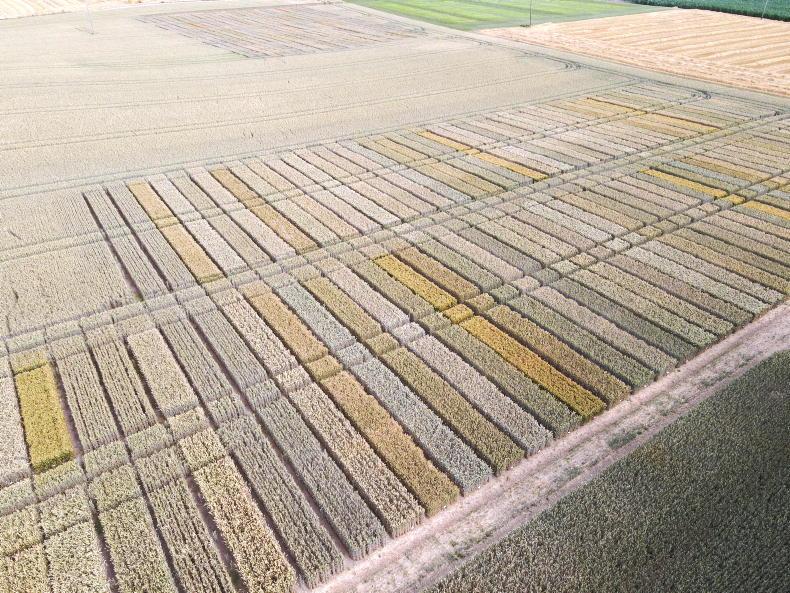
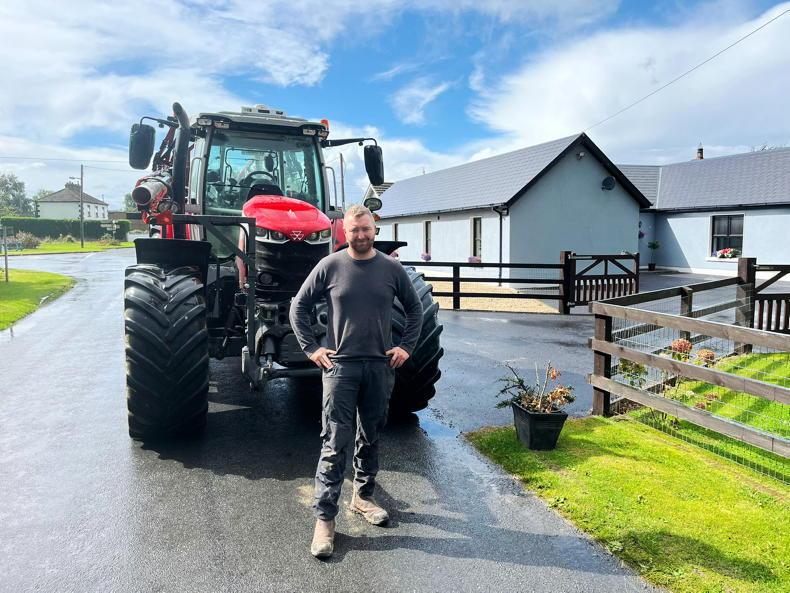
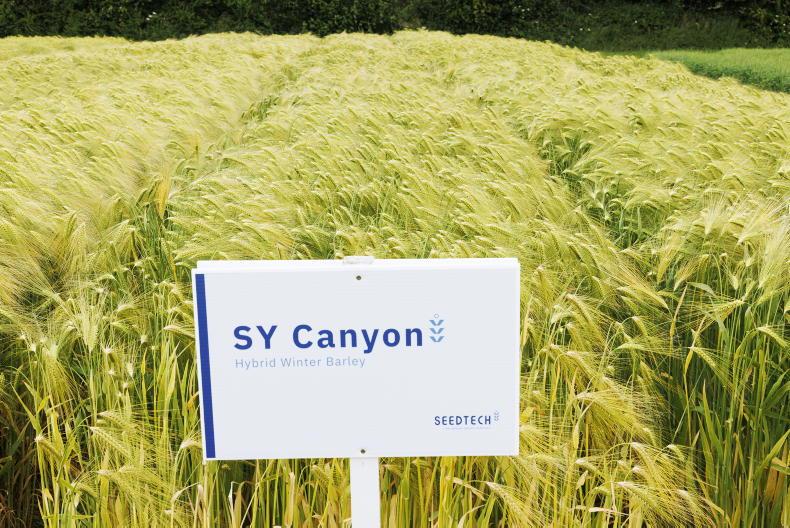


SHARING OPTIONS